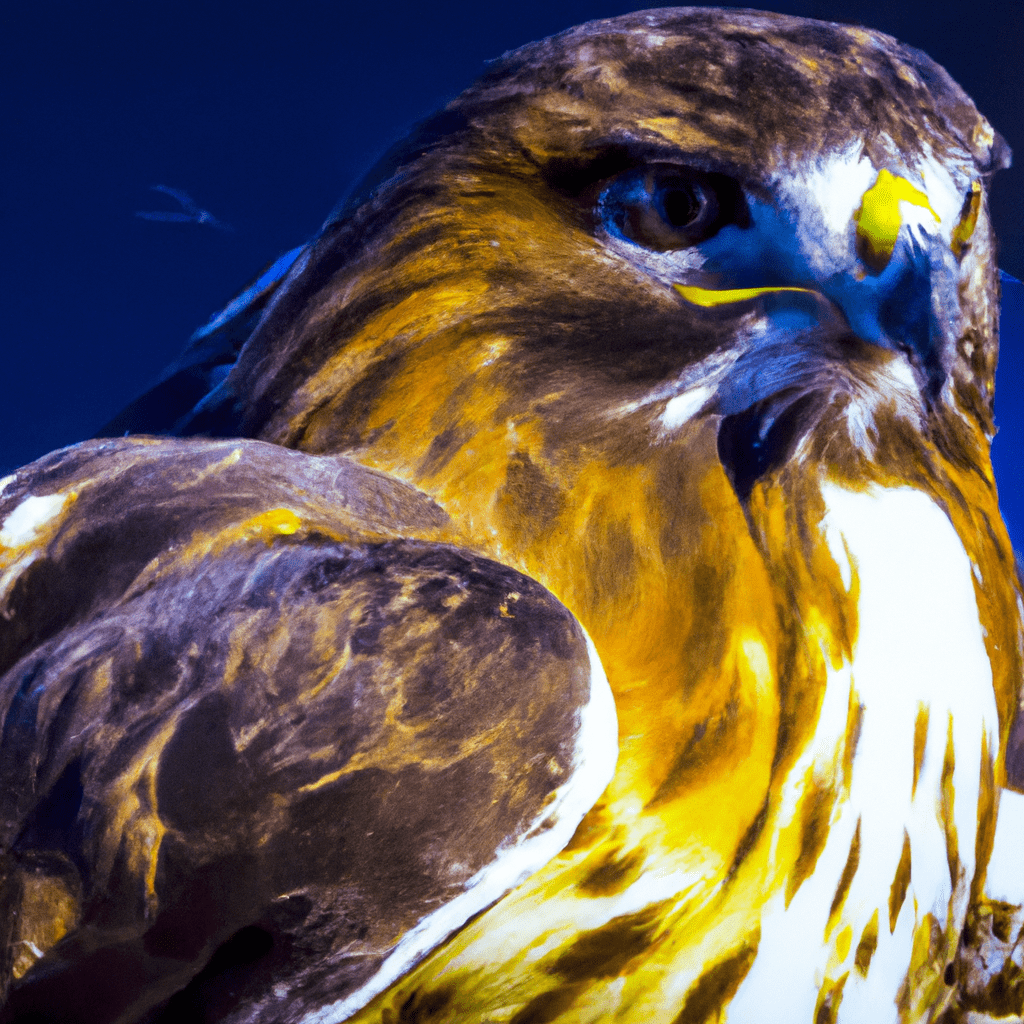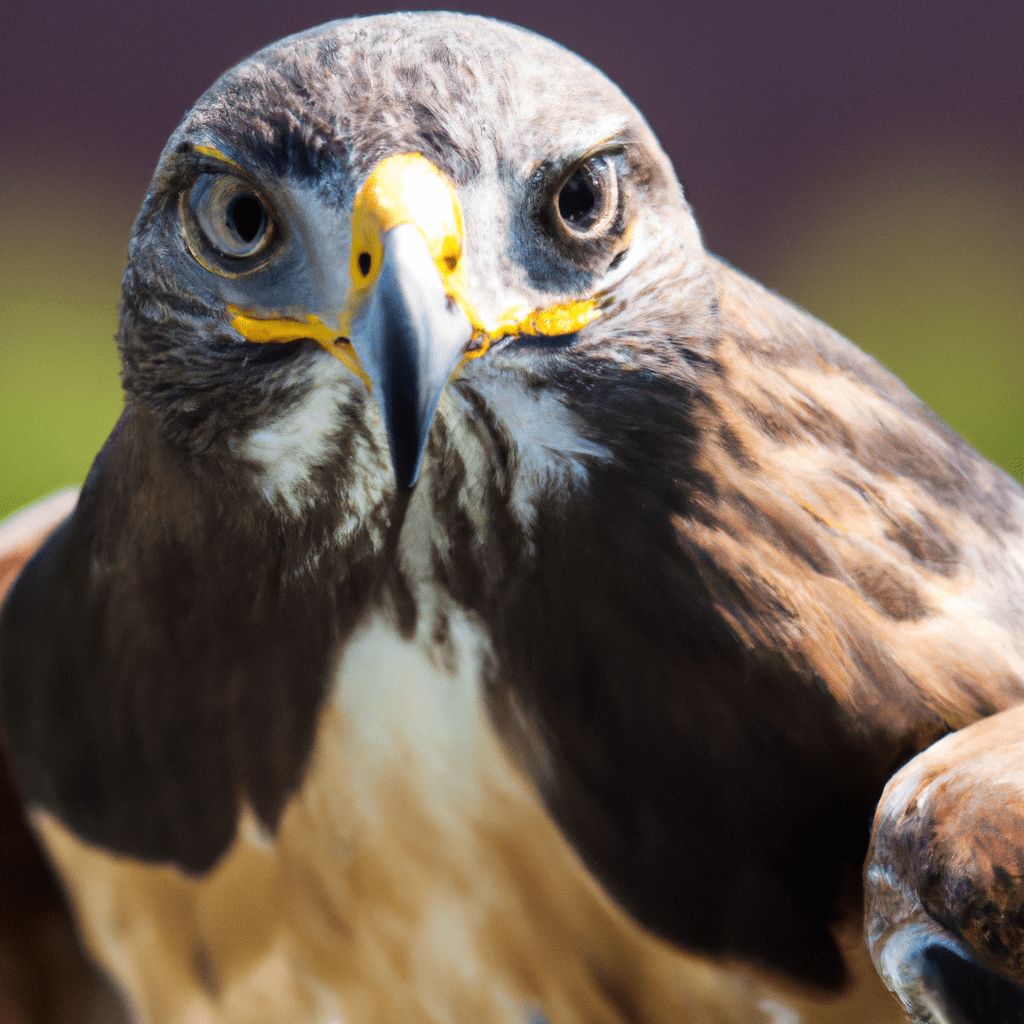In the fascinating world of birds of prey, distinguishing between hawks and eagles can be quite a challenge. But fear not, fellow enthusiasts! This article aims to provide you with the essential knowledge and visual cues necessary to confidently differentiate between these majestic creatures. Whether it’s the distinctive feather patterns, size variations, or unique flight patterns, we’ll explore every aspect that sets hawks and eagles apart. So, grab your binoculars and join us on this captivating journey into the realm of aerial hunters.
Size

General Size Differences
Hawks and eagles are both majestic birds of prey that exhibit significant differences in size. While both belong to the Accipitridae family, eagles are generally larger than hawks. Eagles typically have a stockier and more robust build compared to hawks, which are relatively slimmer. However, it’s important to note that there are various species of hawks and eagles, and the specific size can vary within each species.
Wingspan
One of the key distinguishing features between hawks and eagles is their wingspan. Eagles generally have much larger wingspans than hawks. The wingspan of an eagle can range from six to eight feet or even more, depending on the species. In contrast, hawks typically have a wingspan ranging from two to four feet. The longer wingspan of eagles allows them to soar effortlessly for prolonged periods, utilizing rising air currents.
Length
In addition to wingspan, the overall length of hawks and eagles also varies. Eagles tend to be longer in length compared to hawks. On average, eagles measure around two to three feet, excluding the length of their tails. Hawks, on the other hand, are generally slightly smaller, ranging from one to two feet in length, excluding the tail.
Weight
Another notable difference between hawks and eagles is their weight. Eagles are significantly heavier than hawks due to their larger body size. Depending on the species, eagles can weigh anywhere between six to fifteen pounds or even more for some species like the Harpy Eagle. On the contrary, hawks are relatively lighter, with weights ranging from one to four pounds. These weight differences reflect the diverse hunting strategies and ecological requirements of these magnificent birds.
Physical Appearance
Body Shape
When observing hawks and eagles, their body shapes provide valuable clues for identification. Eagles possess a bulkier and more muscular body structure, which aids them in hunting larger prey and soaring at higher altitudes. In contrast, hawks have a more streamlined and slender body shape, facilitating agile flight and maneuverability in dense forested surroundings.
Head Shape
The shape of the head is another characteristic that helps differentiate hawks from eagles. Eagles possess larger heads with strong, curved beaks adapted for tearing through flesh. Their eyes are positioned more forward, enabling binocular vision and enhancing their ability to focus on distant prey. Hawks, on the other hand, have relatively smaller heads with shorter, hooked beaks designed for catching prey on the ground. They have lateral eyes, providing them with a wider field of view for hunting in open areas.
Eye Color
Eye color is an important physical feature that varies between hawks and eagles. Eagles typically have yellow eyes, although some species may exhibit brown or orange hues. This vibrant eye color adds to their fierce and majestic appearance. In contrast, hawks often possess a range of eye colors, including yellow, brown, or even red. The eye color of hawks can be influenced by various factors such as age, gender, and species.
Feather Patterns
Feather patterns are unique to each species of hawks and eagles. Eagles are known for their striking plumage, with distinctive patterns and colors across their bodies. They often exhibit a combination of light and dark feathers, featuring shades of brown, black, white, and sometimes even gold. Hawks, too, have diverse feather patterns, but they are generally more muted in coloration, with shades of brown and grey. Additionally, some hawks may have noticeable streaks or patches of white or rufous on their bodies, adding to their overall camouflage in their preferred habitats.
Beak Shape
The shape of the beak is yet another characteristic that helps to distinguish between hawks and eagles. Eagles have large, strong, and hooked beaks adapted for tearing flesh, allowing them to catch and consume larger prey. Their beaks are essential tools for survival in their predatory lifestyle. Hawks, on the other hand, have smaller, sharply pointed beaks that are more suited for capturing and dispatching smaller prey efficiently.
Flight Patterns
Soaring Techniques
Both hawks and eagles are well-known for their impressive flying abilities, but their soaring techniques differ slightly. Eagles are renowned for their mastery of soaring, utilizing thermal currents to gain altitude effortlessly. They can be observed circling high in the sky, taking advantage of updrafts and air thermals to remain airborne for extended periods. Hawks also utilize soaring techniques but are often seen flying at lower altitudes, using a combination of flapping and gliding to navigate through their woodland habitats.
Flying Speed
Eagles are recognized for their remarkable flying speed, especially during hunting pursuits. Some species of eagles can reach speeds of up to 40-50 miles per hour while in level flight. However, their speeds may vary depending on the specific species and environmental conditions. Hawks, though agile flyers, generally attain slightly slower speeds, typically ranging from 20-40 miles per hour. These speeds enable both hawks and eagles to swiftly pursue and capture their prey.
Descending and Ascending
When it comes to descending and ascending, eagles exhibit soaring descents with grace and precision. They often fold their wings and plummet towards the ground, using their sharp vision to spot potential prey during their descent. This diving technique allows them to surprise and capture their prey effectively. Hawks, on the other hand, employ the strategy of utilizing their wings to glide in a downward trajectory before ascending using a series of powerful wingbeats.
Wing Flapping Frequency
Observing the frequency of wing flapping can provide insights into differentiating between hawks and eagles during flight. Hawks tend to exhibit more consistent and rapid wing flapping motions as they navigate through their preferred habitats. This frequent wingbeating enables them to maintain stability and maneuverability in dense woodland environments. Eagles, on the other hand, employ more gliding and soaring techniques, requiring fewer wing flaps to cover larger distances. Their wing flapping is often less frequent and more deliberate, allowing them to conserve energy while soaring at higher altitudes.






Habitat Preferences
Geographical Distribution
Hawks and eagles can be found across various continents and regions, but their geographical distribution differs. Eagles are more widespread, inhabiting diverse habitats such as mountains, forests, wetlands, and grasslands. They have a global distribution, with different species found in North America, Europe, Asia, Africa, and Australia. Hawks, too, have a broad distribution, but they are more commonly found in forested regions and open areas, including meadows, farmlands, and coastal areas. The specific species of hawks and eagles found in each region vary depending on local ecological conditions.
Preferred Ecosystems
Hawks and eagles exhibit habitat preferences based on their ecological requirements. Eagles tend to favor open habitats, including coastal areas, lakes, rivers, and grasslands, where they can find expansive areas for hunting and building their nests. They are often associated with larger bodies of water due to their propensity for catching fish. Hawks, on the other hand, are adaptable birds that can thrive in a range of ecosystems, including forests, woodlands, deserts, and even urban environments. They utilize their versatile hunting techniques to adapt to diverse habitats.
Nesting Habitats
When it comes to nesting, both hawks and eagles select specific habitats for building their nests. Eagles typically construct large, sturdy nests known as eyries or aeries, high in trees or on cliffs. These nests are often reused year after year and can grow to impressive sizes. Hawks, on the other hand, build smaller nests, known as aeries or eyries as well, which are compact and constructed in various locations. Hawks may choose to build their nests in trees, on ledges, or even on man-made structures such as buildings or power towers. The nesting habitat preferences of hawks and eagles are influenced by factors such as available food sources, protection from predators, and suitable locations for raising their young.
Behavioral Characteristics
Hunting Techniques
Hawks and eagles utilize different hunting techniques based on their preferred prey and habitats. Eagles are renowned for their spectacular aerial displays during hunting, often engaging in high-speed pursuits to catch fish mid-flight or snatching small mammals and birds from the ground. They also employ patient perching, scanning the surrounding areas for potential prey before swooping down for the kill. Hawks, on the other hand, are agile hunters that employ various strategies such as stooping, soaring, and hovering. They rely on their sharp vision to spot prey from elevated perches and then swoop down to capture it with their powerful talons.
Prey Preferences
The diet of hawks and eagles plays a significant role in differentiating their prey preferences. Eagles are apex predators and typically feed on larger prey such as fish, small to medium-sized mammals, and occasionally even other birds. They possess strong beaks and talons capable of tearing through the flesh of their prey. Hawks, on the other hand, have a more varied diet that includes small to medium-sized mammals, birds, reptiles, and even insects. Some hawk species have developed specialized hunting techniques, like the Coopers Hawk’s ability to capture small birds in mid-air.

Social Behavior
Hawks and eagles exhibit different social behaviors, varying from solitary to cooperative interactions depending on the species. Eagles are generally solitary birds, with each pair occupying a defined territory and defending it fiercely against intruders. They engage in elaborate courtship displays during the breeding season. Hawks, on the other hand, may exhibit more social behavior, especially during migration or in areas with abundant food resources. Some hawk species may form loose nesting colonies, facilitating cooperative nesting and feeding in close proximity.
Territoriality
Both hawks and eagles exhibit territorial behavior to defend their preferred hunting grounds and nesting sites. Eagles fiercely defend their territories against intruders, signaling their dominance through aerial displays and vocalizations. They usually have larger territories, as they require ample space to find sufficient food resources. Hawks, too, exhibit territoriality, but their territories are generally smaller in comparison. They are known to defend their territories more actively during the breeding season, ensuring exclusive access to resources required for their nests and young.
Vocalizations
Calls and Sounds
The vocalizations of hawks and eagles provide additional clues for differentiating between the two. Eagles produce a range of vocalizations, including high-pitched screams and screeches that are often associated with their majestic nature. These calls can be heard during territorial disputes, courtship displays, and even while interacting with their young. Hawks, on the other hand, produce a variety of calls, which can include whistling, screeching, and grating sounds. These vocalizations serve multiple purposes, including territorial communication and attracting mates.
Distinctive Vocalizations
Hawks and eagles have their unique vocalizations that can aid in their identification. Bald Eagles, for example, are known for their distinctive calls, consisting of high-pitched, sharp whistling notes. Red-shouldered Hawks, on the other hand, produce a series of vibrant, long whistles that sound like a clear “kee-yar” or “kee-yah.” These unique vocalizations, among others, enable experienced birdwatchers and enthusiasts to identify the specific species of hawks and eagles based on their calls.
Migration Patterns
Seasonal Movements
Migration is an integral part of the life cycle of many hawks and eagles, ensuring their survival and continued access to suitable habitats and food resources. Both hawks and eagles exhibit seasonal movements, although the specifics can vary depending on the species and geographical locations. Some species undertake long-distance migrations, traveling thousands of miles, while others may have more localized or altitudinal migrations. These seasonal movements often occur during the spring and fall, as birds follow favorable weather conditions and the availability of food along their migratory routes.
Long-Distance Travel
Some species of hawks and eagles are known for their extraordinary long-distance travel during migration. For instance, the Western Osprey, commonly known as the Sea Hawk, has one of the most extensive migration ranges among birds of prey. It travels thousands of miles between its breeding grounds in North America and its wintering grounds in South America. Similarly, certain eagles, such as the Steppe Eagle and the Eastern Imperial Eagle, undertake impressive transcontinental migrations, covering vast distances across continents.
Conservation Status
Threats and Conservation Efforts
Hawks and eagles face various threats in the wild that have led to conservation concerns for several species. Habitat loss and degradation, caused by factors such as urbanization, deforestation, and agricultural expansion, pose significant challenges for these birds of prey. In addition, pollution, including pesticides and heavy metals, can negatively impact both their habitats and their prey populations. Illegal hunting, disturbance near nesting sites, and collisions with man-made structures, such as power lines and wind turbines, also pose threats to hawks and eagles.
Conservation efforts aimed at protecting and conserving hawks and eagles include habitat preservation, legal protection, and captive breeding programs. Many countries have established protected areas and national parks to safeguard their habitats. Conservation organizations and government agencies work towards raising awareness, conducting research, and implementing measures to mitigate threats and ensure the long-term survival of these magnificent birds.
Endangered Species
Within the hawks and eagles family, several species are designated as endangered or critically endangered due to their small population sizes and habitat loss. For instance, the Philippine Eagle, one of the world’s largest and rarest eagles, is critically endangered due to deforestation and hunting. The California Condor, a species of vulture, was once on the brink of extinction but was successfully brought back from the brink through captive breeding and reintroduction programs. Efforts to protect and conserve these endangered species are crucial to prevent their extinction and preserve the diverse ecosystems they inhabit.
Protected Status
Numerous hawks and eagles are protected under national and international legislation, including the U.S. Bald and Golden Eagle Protection Act and the Convention on International Trade in Endangered Species of Wild Fauna and Flora (CITES). These legal protections prohibit hunting, capture, and trade of these birds, ensuring their conservation and survival. Additionally, various conservation organizations and rehabilitation centers work tirelessly to rescue, rehabilitate, and release injured or orphaned hawks and eagles back into the wild to help maintain healthy populations.
Cultural Significance
Symbolism and Mythology
Throughout history, hawks and eagles have held significant cultural symbolism and mythology in various civilizations and indigenous cultures. In many Native American cultures, eagles symbolize strength, wisdom, and spiritual guidance. They are revered as sacred birds, often associated with the sun and believed to bridge the physical and spiritual realms. Hawks, too, hold symbolic meanings in different cultures. They are often regarded as symbols of focus, intensity, and vigilance, embodying qualities such as keen observation, perseverance, and precision.
Representation in Art and Literature
Hawks and eagles have long captivated the human imagination and inspired artistic creations across different mediums. Their majestic presence and impressive aerial abilities are depicted in paintings, sculptures, and literature throughout history. Artists have sought to capture their grace and beauty, while writers have woven tales and legends featuring these majestic birds. From ancient mythology to modern literature, hawks and eagles continue to be portrayed as powerful and awe-inspiring creatures, embodying freedom, strength, and resilience.
Interesting Facts
Hawk Facts
- There are over 200 species of hawks worldwide, exhibiting a remarkable diversity in size, habitat preferences, and hunting techniques.
- The Harpy Eagle is considered one of the most powerful and largest species of hawks, capable of preying on monkeys and sloths in the tropical rainforests of South America.
- The Red-tailed Hawk, a common and well-known species, is often recognized by its distinctive red tail and is one of the most widespread hawks in North America.
- Some species of hawks, such as the Ferruginous Hawk, build the largest nests of any North American bird, constructing massive structures that can measure more than six feet in diameter.
Eagle Facts
- With their remarkable vision, eagles can spot prey from miles away, thanks to their highly developed eyesight and the ability to see ultraviolet light.
- The Philippine Eagle holds the distinction of being one of the world’s largest eagles, with a wingspan that can exceed seven feet.
- The Bald Eagle, the iconic national bird of the United States, is predominantly found in North America and is known for its striking white head and tail feathers.
- Golden Eagles are renowned for their incredible speed and agility during hunting, capable of reaching speeds of up to 150 miles per hour when stooping on their prey.



